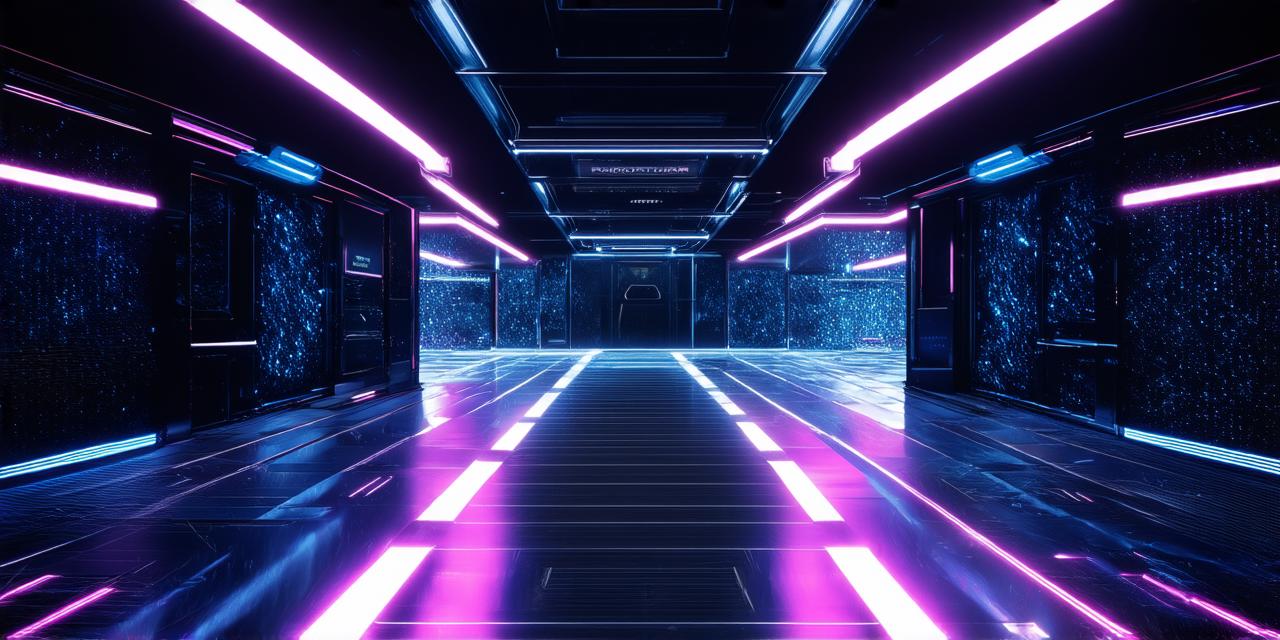How to Create a Virtual Reality Application: A Comprehensive Guide for Developers
Virtual reality (VR) is an exciting and rapidly growing technology that allows users to experience immersive digital environments. As a VR developer, you have the opportunity to create innovative and engaging applications that can transform the way people interact with the world around them. In this guide, we will explore the key steps involved in creating a virtual reality application, as well as best practices for optimizing your app’s performance and user experience.
1. Define Your VR Application Concept
Before you start designing your VR application, it’s essential to have a clear understanding of what you want to achieve. Consider the following questions:
- What problem or opportunity does your VR app solve?
- Who is your target audience?
- What kind of experience do you want to provide?
- What features and functionality are necessary for your app?
By answering these questions, you can develop a concept that guides your design process and helps you create an app that meets the needs and expectations of your users.
1. Choose Your VR Development Platform
There are several VR development platforms available, each with its strengths and weaknesses. Some popular options include Unity, Unreal Engine, and A-Frame. Consider the following factors when selecting a platform:
- Ease of use: How easy is it to learn and use the platform?
- Performance: Does the platform deliver smooth and responsive performance?
- Community support: Is there a large and active community of developers who can provide help and support?
- Cost: What is the cost of using the platform, both in terms of software licenses and development resources?
By carefully evaluating these factors, you can choose the VR development platform that best suits your needs.
1. Design Your VR Environment
The design of your VR environment is critical to creating an immersive and engaging experience for your users. Consider the following tips when designing your environment:
- Use realistic lighting and textures to create a believable and immersive world.
- Pay attention to the layout and placement of objects in the environment to ensure they are intuitive and easy to navigate.
- Incorporate interactive elements, such as buttons and levers, to allow users to interact with the environment.
- Test your design with a variety of users to gather feedback and identify areas for improvement.
1. Develop Your VR Application
Once you have designed your VR environment, it’s time to start developing your application. Consider the following steps:
- Write code to implement the functionality and features of your app.
- Test your code regularly to identify and fix bugs and performance issues.
- Optimize your code for performance by reducing load times and minimizing resource usage.
- Integrate audio, visual, and haptic feedback to enhance the user experience.
1. Launch Your VR Application
When you are ready to launch your VR application, consider the following steps:
- Choose a platform to distribute your app, such as the Oculus Store or Steam.
- Submit your app for review by the platform’s content guidelines.
- Promote your app through social media, online advertising, and other channels to attract users.
- Gather feedback from users to identify areas for improvement and future updates.
FAQs
What kind of hardware is required to develop a VR application?
To develop a VR application, you will need a computer with a powerful graphics card, as well as a VR development kit or platform.
How long does it take to develop a VR application?
The time it takes to develop a VR application depends on the complexity of the app and the resources available for development. On average, VR applications can take several months to complete.
What are the key performance considerations when developing a VR application?
When developing a VR application, it’s essential to optimize your code for performance by reducing load times and minimizing resource usage. You should also test your app regularly to identify and fix performance issues.
